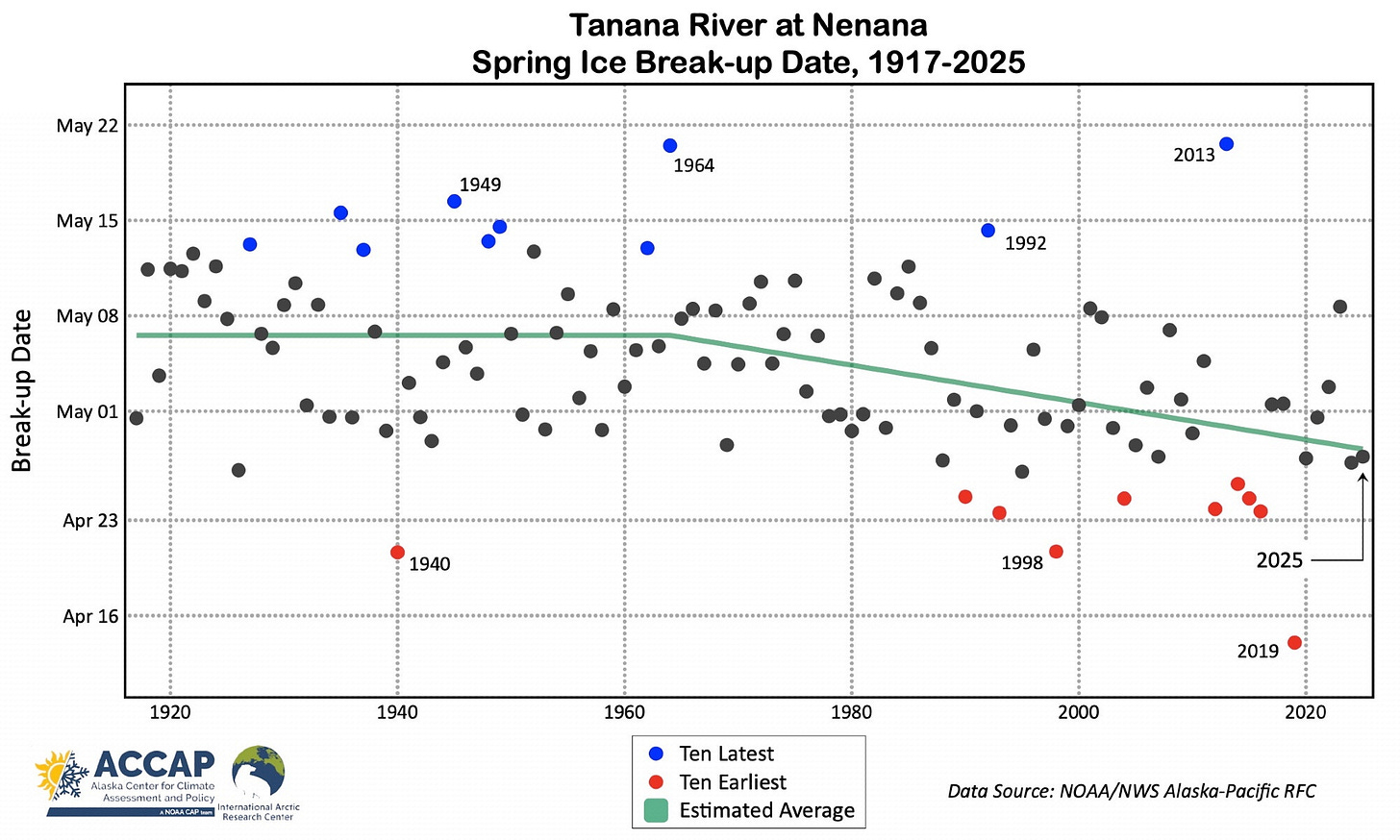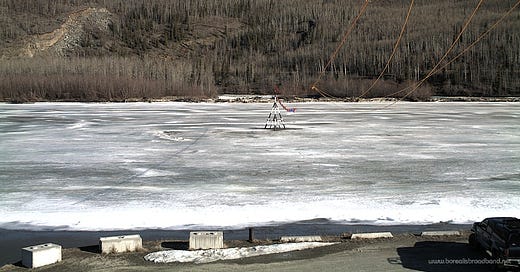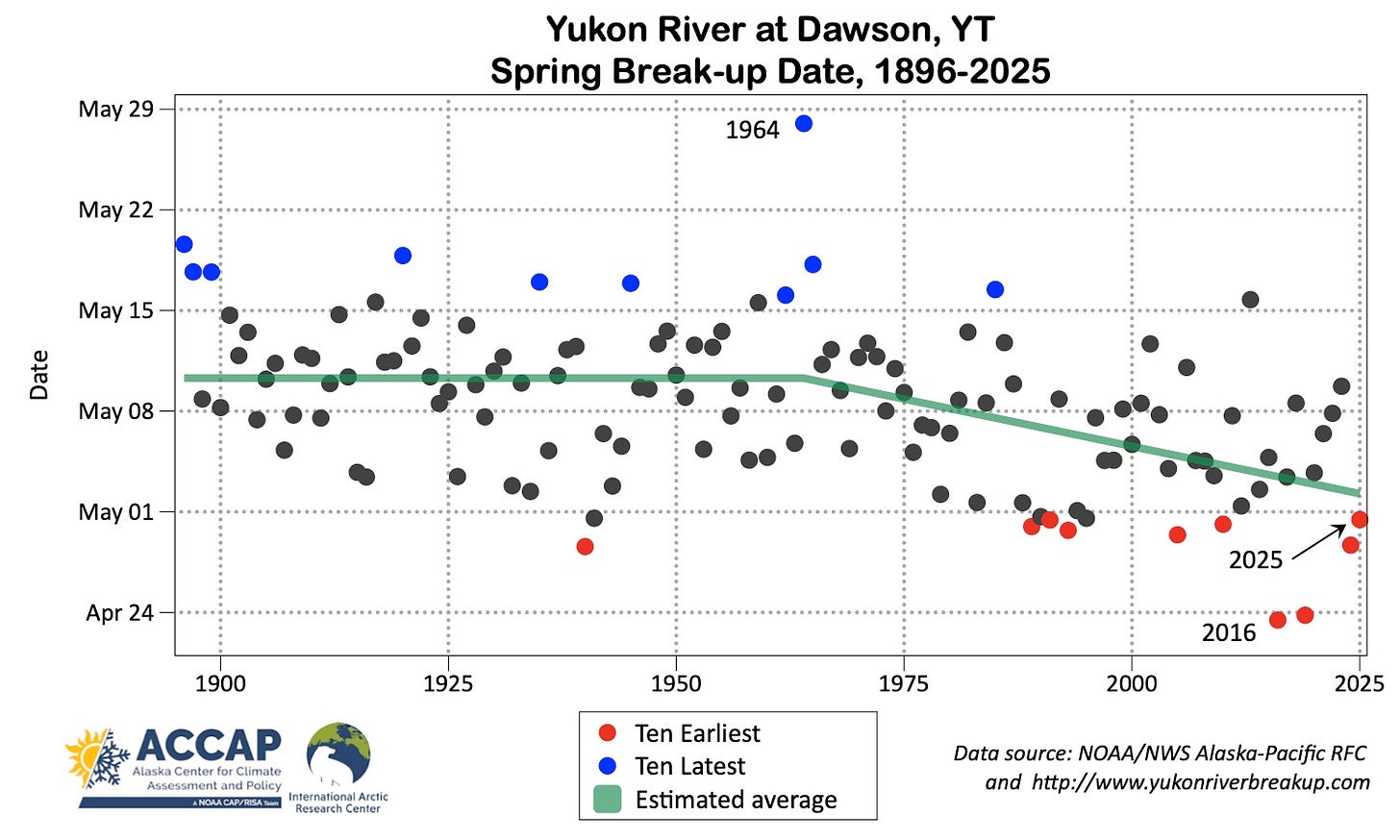Spring 2025 River Break-up: Early Results
Tanana and Yukon River break-up thus far typical for the 21st century
A ritual of northern Springs is eagerly awaiting the break-up of the winter ice on rivers, which brings the threat of flooding to some areas but also heralds the start of the boating season and summer activities. This post covers break-up through May 1 on the Yukon and Tanana Rivers. I’ll have another post to cover the The Yukon downriver of Eagle and the Kuskokwim River.
Tanana River Nenana
The ice break-up on the Tanana River at Nenana is the most famous of Alaska break-ups, as betting on the date and time of when the ice moves was the original motivation in 1917 by crews working on building the Alaska Railroad. The funky configuration of a tripod connected to a clock (Fig. 1 ) has been used since the beginning. See my May 2023 post here for more details on the break-up observation history and its importance as a climate record.

This year the official break-up was at 4:56 pm AKDT (3:56 pm AKST if you bought a ticket) April 27. This is the same calendar date as last years’ break-up but with the more typical late afternoon timing (2024 was very unusual in seeing an early morning break-up). Figure 2 plots the break-up date (incorporating the time of day) for every year since 1917 as well as an estimate of the time varying average. The trend since the 1960 is substantial: the average date of break-up is about 9 days earlier nowadays, with both 2024 and 2025 very close to what we would expect in the current climate.

Just a quick glance at Fig. 2 shows that an April 27 break-up is not unusual nowadays, but that hasn’t always been the case. Figure 3 plots the same data as in fig. 2 but highlighting only those years when break-up was earlier than this year. Only three times in the 74 years 1917 to 1990 was break-up any earlier than this year. In the 34 years 1991 to 2024 break-up was earlier than this year 13 times. So that’s a change of “break-up earlier than late afternoon April 27” from about once every 25 years to once every 2.6 years.

Yukon River at Dawson, YT
Dawson has the longest set of break-up observations in high latitude North America, with the date (and in most years the time) of river ice break-up available since 1896. Although the methodology has varied more than the Tanana River at Nenana, the story 130 years of observations tells is the same. This year, the ice broke at 10:56 am MDT April 30. This is five days earlier than the average over the past 50 years and is the tenth earliest on record. Between the start of observations in 1896, and 1939, not a single year saw the Yukon River ice break in April.
Yukon River at Eagle
Eagle, Alaska is about 150 river miles (240km) downstream from Dawson. Here, the ice went out on the Yukon River about 2 am on May 1, about two days earlier than last year and four days earlier than the 1975-2024 average. The observational record of break-up dates at Eagle starts in 1898, but unlike Dawson, there are some gaps in the annual record prior to 1969. Nonetheless it’s clear that like the Tanana River at Nenana and Yukon River at Dawson, while this was not an especially early break-up for the modern era, it would have been very notable prior to 1990.




